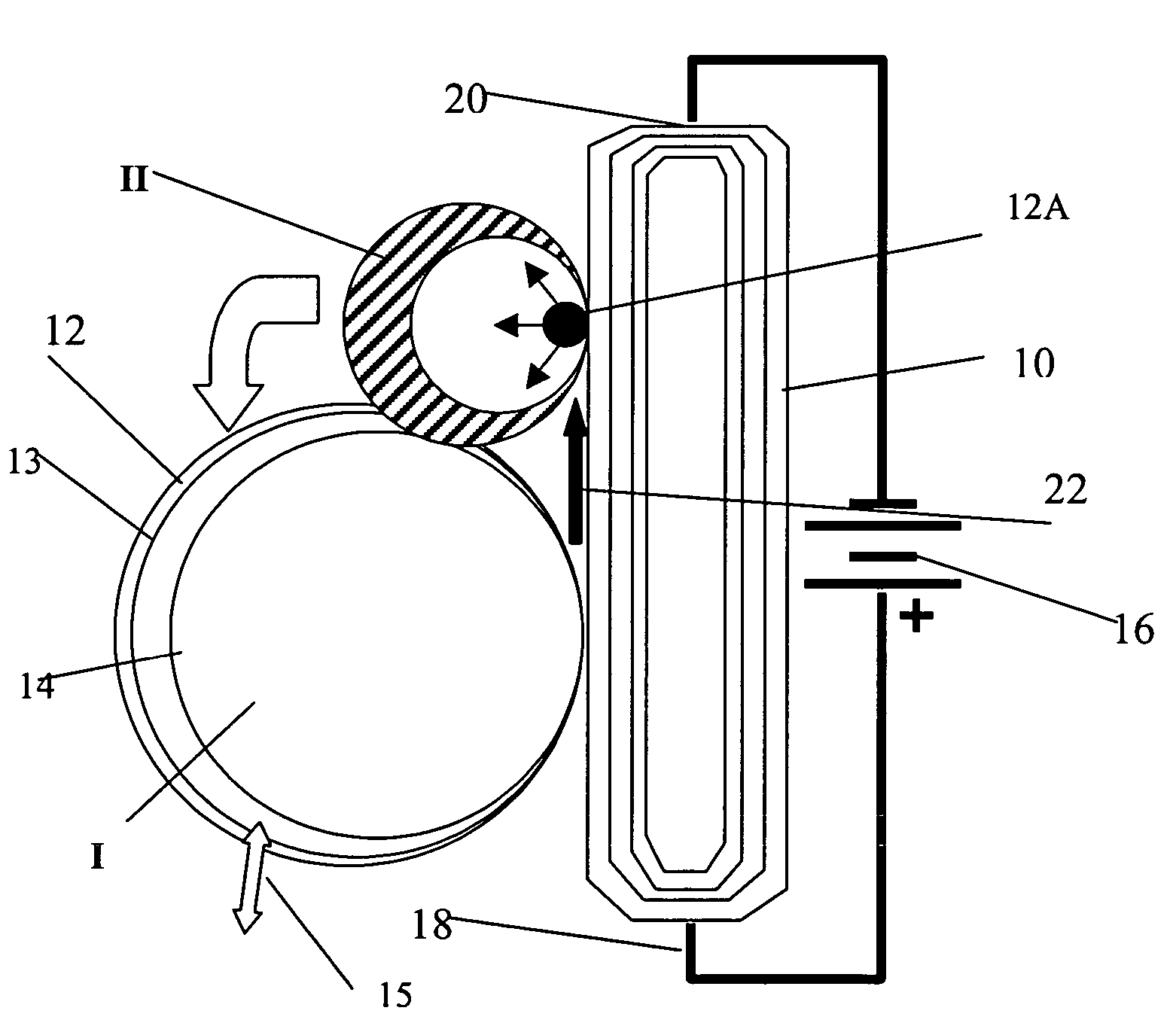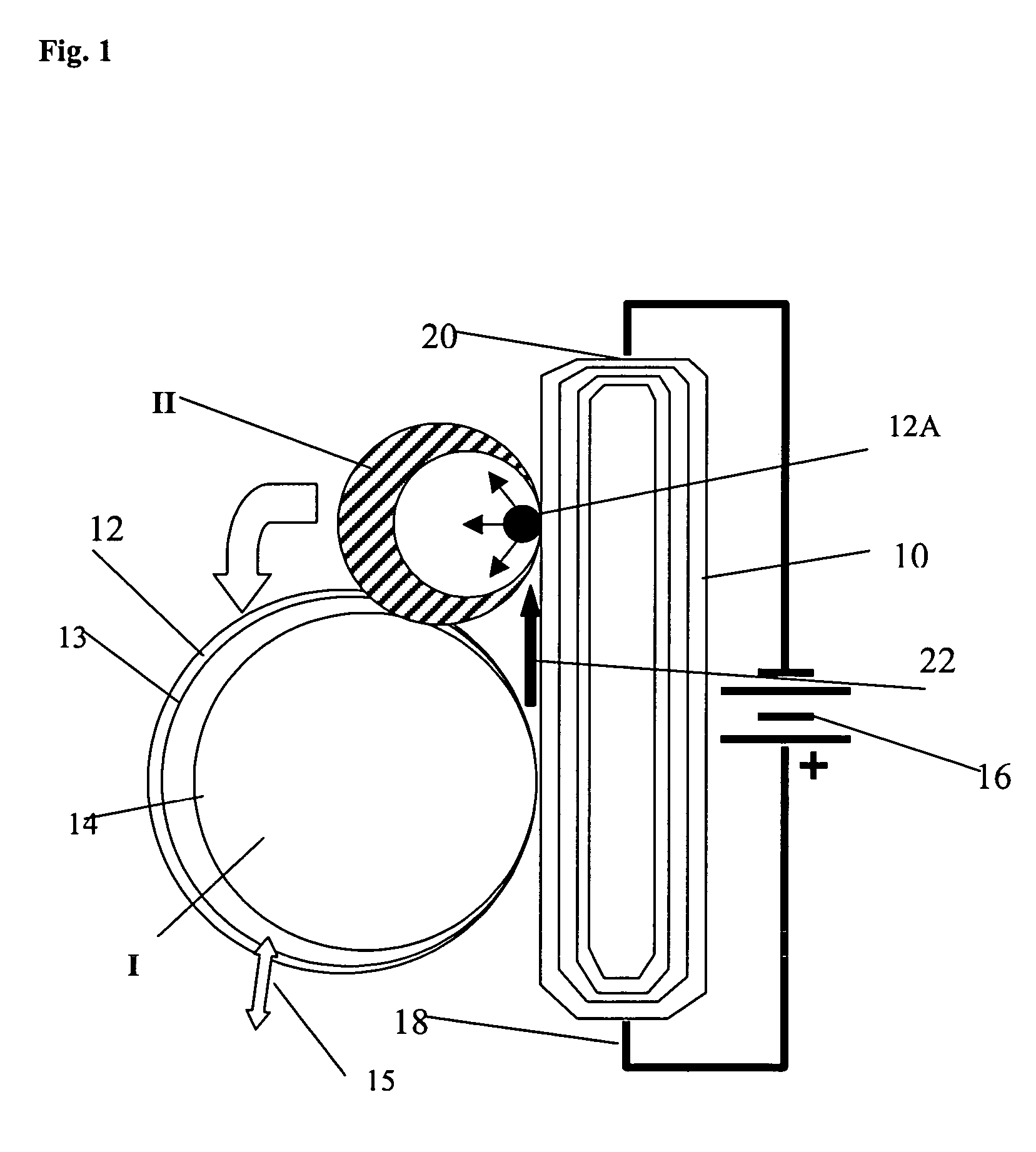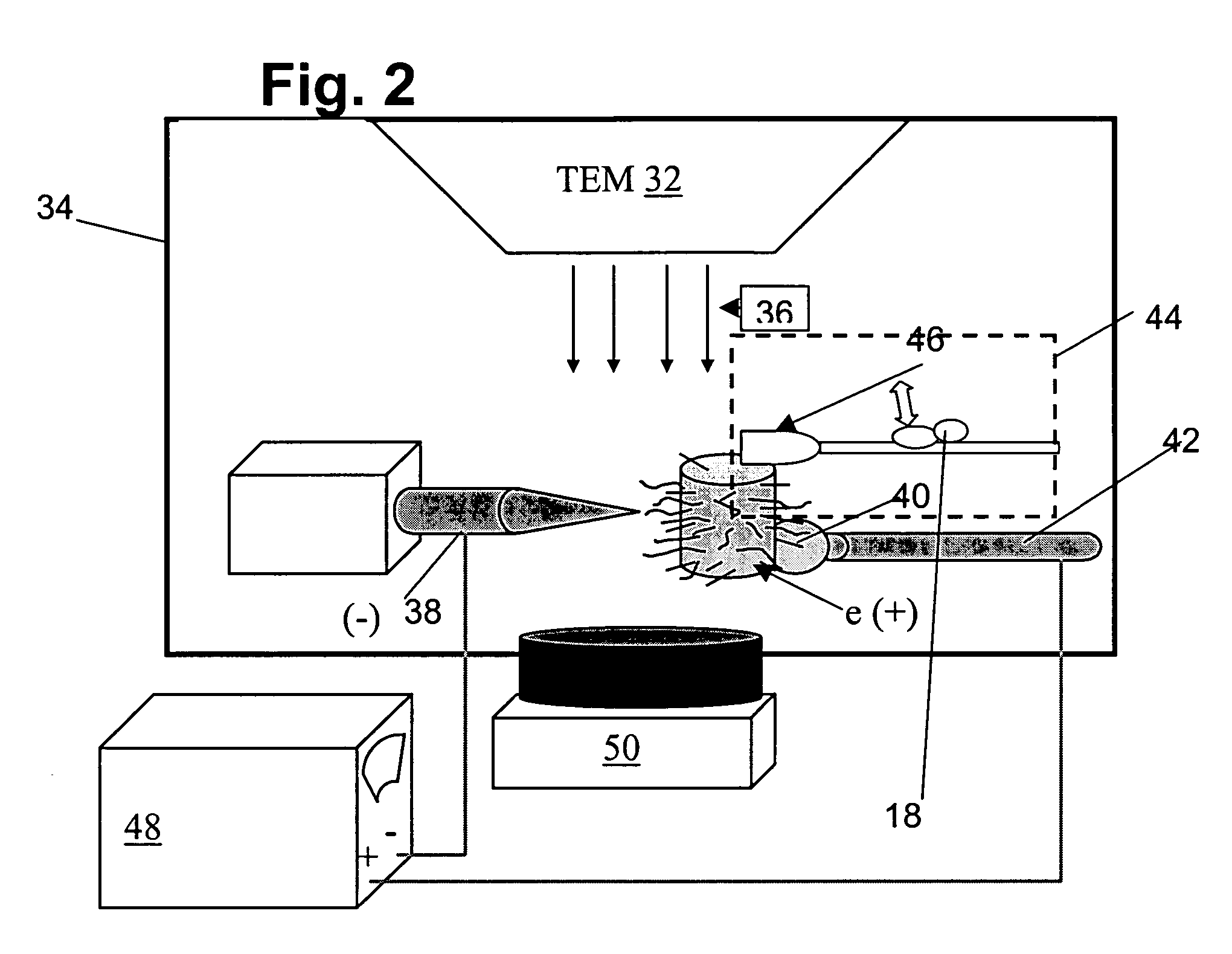Nanoscale relaxation oscillator
a relaxation oscillator and nanoscale technology, applied in the field of nanostructures, can solve the problems of limited degree to which surface tension is exploited by these approaches, and the inherently unidirectional nature of surface tension action, and achieve the effect of significant mechanical for
- Summary
- Abstract
- Description
- Claims
- Application Information
AI Technical Summary
Benefits of technology
Problems solved by technology
Method used
Image
Examples
Embodiment Construction
Definitions
[0033]The term “channel” is used herein in its most general sense. It is intended to cover nanotubes (single or multiwalled, made of various materials such as carbon or boron nitride), nanorods, nanowires, quasi-one dimensional paths on two-dimensional surfaces that are defined by chemical or physical means (i.e. by treating the surface to create a barrier to unconstrained two-dimensional surface diffusion), and the like. A silicon wafer may be etched with a fine groove to provide the present channel. The channel is essentially atomically smooth, as that term is understood in the field of material science. As used herein, and generally understood in the art, “atomically smooth” means lacking in contaminants, imperfections or other barriers, cavities or defects that disrupt an ordered atomic structure that would provide an extremely smooth surface. A discussion of atomic smoothness is found in Koch et al., “Modelling of HREM and nanodiffraction for dislocation kinks and co...
PUM
 Login to View More
Login to View More Abstract
Description
Claims
Application Information
 Login to View More
Login to View More - R&D
- Intellectual Property
- Life Sciences
- Materials
- Tech Scout
- Unparalleled Data Quality
- Higher Quality Content
- 60% Fewer Hallucinations
Browse by: Latest US Patents, China's latest patents, Technical Efficacy Thesaurus, Application Domain, Technology Topic, Popular Technical Reports.
© 2025 PatSnap. All rights reserved.Legal|Privacy policy|Modern Slavery Act Transparency Statement|Sitemap|About US| Contact US: help@patsnap.com



